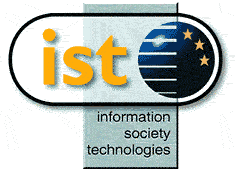WP2: Design Methods and Tools for Real-Time Systems
Objectives
-
Specify the necessary functions and adaptations to support the description
of real-time characteristics of systems using the extended SDL, MSC and
TTCN notations.
-
Deliver a first interconnected toolset, based on existing baseline tools
for the project, that will allow the end-users to have rapidly a reference
working environment in order to start with their applications.
-
Prototype and deliver an integrated toolset supporting the full design
methodology for real-time systems: modelling and execution of temporal
specifications, design evaluation and testing.
Description of work
Harmonisation of SDL, MSC and TTCN, automated test case generation
Although SDL, MSC and TTCN have been developed as separate standards,
it is now common that all three notations be used simultaneously. It is
therefore necessary that new timing extensions are co-ordinated in order
to harmonise the interface between the languages.
The timed extensions of SDL, MSC and TTCN will be take into account
the automation of test case development for testing timed properties. In
the first instance, the automated test case development must be in line
with the approach of existing tools i.e. having test purpose described
by timed MSCs.
Prototyping
-
Specify the necessary extensions to support the timed description of real-time
characteristics.
-
Prototype timed extensions to SDL and MSC including both the modelling
and the verification aspects
-
Prototype timed extensions to TTCN, and develop the connection to time
representation in SDL/MSC
-
Interconnect the SDL simulation tool and TTCN execution tool to validate
the timed aspects in both descriptions. Co-simulation and test generation
facilities will be provided at different design stages.
-
Deliver an integrated toolset that provides traceability links between
timed SDL, MSC and TTCN.
User documentation and guidance
The documentation will contain two parts: First part will describe
the toolset environment, the start-up prerequisite, the adaptations and
extensions. Second part will give application guidelines for real-time
systems design, simulation, validation and testing with the INTERVAL toolset,
through guided examples.Feedback from using the toolset in WP3 applications
will be taken into account to correct major defaults and deficiencies that
will have been detected by validating the methodology.



